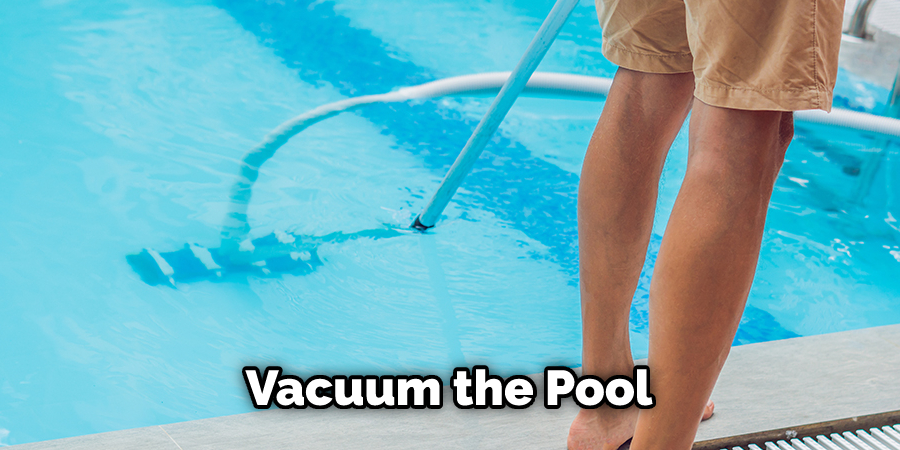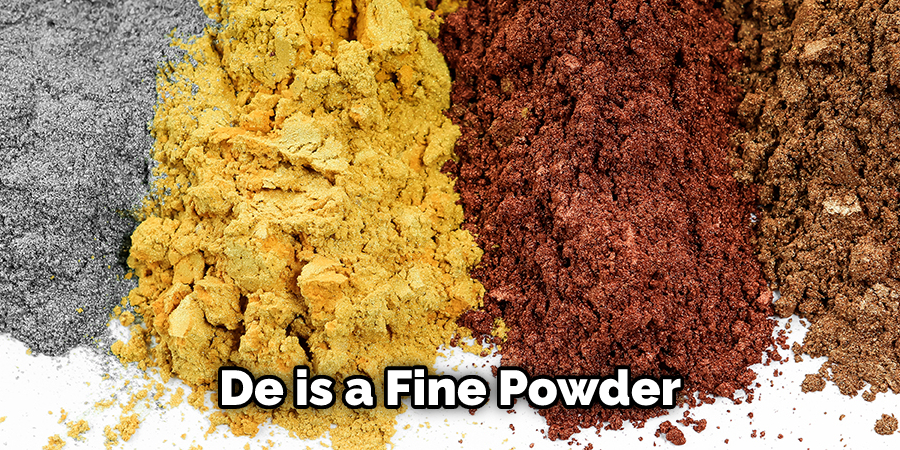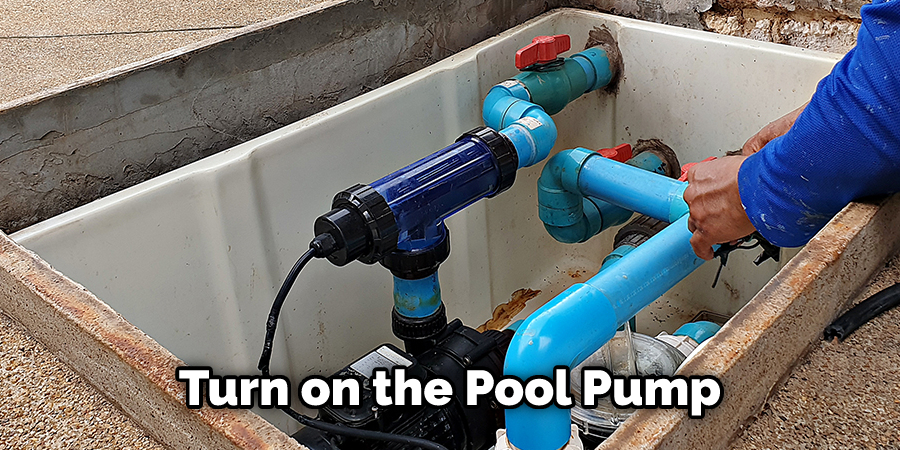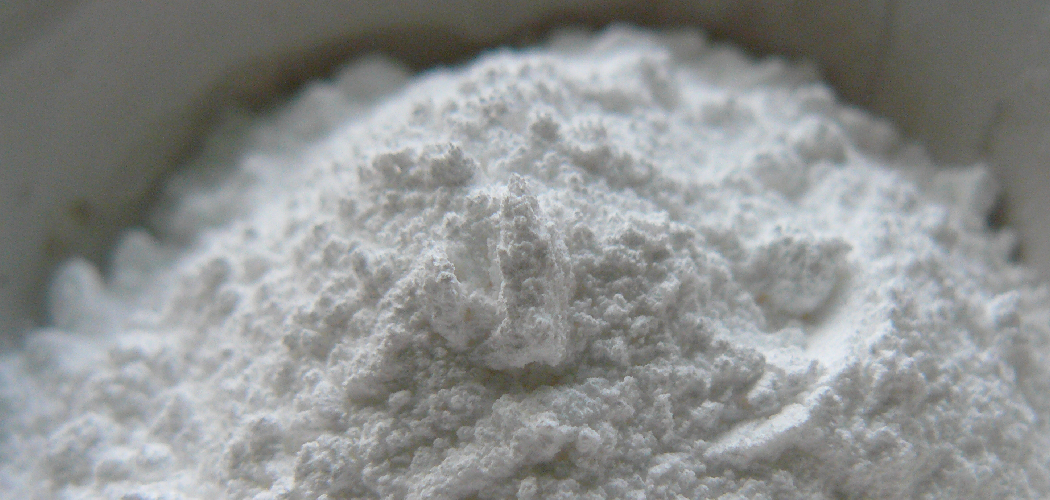Are you looking to enhance the efficiency of your pool’s filtration system and improve water clarity? Adding diatomaceous earth (DE) to your pool can be the solution you’re seeking. DE, a fine powder made from fossilized remains of diatoms, acts as a highly effective filter medium due to its microscopic size and porous nature.

When added to the pool’s filter, DE forms a thin layer on the filter grids, capturing even the smallest particles and impurities from the water. This results in sparkling, crystal-clear water that is safe for swimming.
Adding DE to your pool may seem like a daunting task, but with the right guidance, it can be a straightforward process. In this article, we will walk you through the step-by-step instructions on how to add DE to pool, ensuring optimal filtration and a pristine swimming experience.
When Should I Add De to My Pool Filter?
Adding de to your pool filter is the best way to ensure that your swimming pool remains clean and free from contaminants. But when should you add it?
The answer depends on a few factors, including how often you use your pool and the weather conditions. Generally speaking, it’s recommended that you add DE to your pool filter at least once a month. This will help keep your pool free of bacteria and other contaminants that can be harmful to swimmers.
If you live in an area with hot, humid weather, then you may need to add DE more often than once a month. The high heat and humidity can cause the water to evaporate quickly, leading to an increase in bacteria and other contaminants in the pool. Adding DE more often can help ensure that your pool remains clean and safe for swimming.
If you use your pool frequently, then it’s important to add DE regularly. The more people swim in your pool, the faster the filter will become clogged with dirt and debris. Adding DE will help keep the filter clean and extend its life.
What Does De Powder Do for Pools?
De powder, also known as diatomaceous earth (DE), is an effective and natural way to keep a few pool clean and sanitized. DE powder is made up of the fossilized remains of diatoms, a type of microscopic organisms that are found in nature. It works to keep your pool clean by acting as an abrasive filtration system – when passed through a filter, the tiny pieces of DE trap particles like dirt and bacteria, making them easier to remove from the water. This helps keep your pool free from contaminants and ensures it stays crystal clear.
The benefits of using DE for pools also include improved filtration and circulation. As it passes through your filter, DE will help capture more particles than other types of media while still allowing water to flow freely throughout the pool. This ensures that all areas of the pool are continuously cleaned and sanitized as long as the filter is running. Plus, using DE can actually extend the life of your filter by reducing the amount of wear and tear on it.

Overall, incorporating DE powder into your pool’s filtration system is an important part of maintaining a clean and sanitary swimming environment. It helps capture contaminants while extending the life of your filter, ensuring that your pool remains clear, healthy, and ready for use whenever you need it!
10 Methods How to Add De to Pool
1. Prepare the Pool
Before adding DE to your pool, ensure that the pool is clean and free of debris. Vacuum the pool, skim the surface, and clean the filter to optimize the effectiveness of DE filtration. Iff the pool is equipped with a DE filter, backwash or rinse it to clean out any debris and dirt.

Although DE can be added with the pump running, it is best to shut off power to ensure that all of the DE enters the filter. While your filter is off, remove any cartridges or grids from the system. To maximize the effectiveness of DE filtration, be sure to also clean out skimmers and check for blockages.
2. Choose the Right Type of DE
There are different grades of DE available for pool use. Select a high-quality DE specifically labeled for pool filtration. Avoid using DE products intended for other purposes, as they may contain additional chemicals that can be harmful to the pool or swimmers.
While DE powder is the most common form, it’s also available in a granular form. Although the granular type is more expensive, it’s easier to handle and apply to the filter. However, it’s also more likely to cloud the pool water.
3. Determine the Appropriate Amount
To determine the correct amount of DE to add, refer to the manufacturer’s instructions or consult a pool professional. The amount of DE required will depend on the size of your pool and the type of DE filter you have.
Generally, for a standard-sized pool with a DE filter, you should add half to one pound of DE powder per square foot of the pool’s filter area. For example, if the filter area of your pool is 40 square feet, you should add 20 to 40 pounds of DE powder. Add the DE evenly around the pool, being careful not to let it settle on the bottom of the pool.
4. Wear Protective Gear
DE is a fine powder that can be irritating if it comes into contact with your skin, eyes, or respiratory system. Before handling DE, put on gloves, safety goggles, and a dust mask to protect yourself. If possible, it is also wise to wear clothes that cover your entire body.

When done, dispose of the gloves and any clothing that came into contact with DE. Once you have your safety gear in place, you can begin adding DE to the pool. Try to keep the DE away from your face and lungs to avoid inhaling it. Make sure you are in a well-ventilated area to avoid breathing in too much dust.
5. Mix DE with Water
To add DE to your pool, first, mix it with water to create a slurry. In a large bucket or container, combine the appropriate amount of DE with water and stir it thoroughly until the DE is fully suspended in the water. This will prevent clumping and ensure even distribution in the pool. Once the DE has been mixed into a slurry, it is ready to be added.
Though you can add the DE directly to the skimmer, it is best to pour it slowly into one of the pool’s returns so that it is more evenly distributed. Once the DE has been added, run your pump for about 10-15 minutes to ensure it was properly mixed into the water.
6. Turn off the Pool Equipment
Before adding the DE slurry to the pool, turn off the pool pump and any other equipment that circulates water. This will prevent the DE from being immediately filtered out before it has a chance to coat the filter grids. While the equipment is off, all of the DE will settle to the bottom of the pool. Make sure to turn the pool equipment off for at least 15 minutes before continuing with the process.
7. Add DE Slurry to Skimmer
With the pool equipment turned off, slowly pour the DE slurry into the skimmer while the skimmer basket is in place. The skimmer will distribute the slurry evenly throughout the pool, allowing the DE to coat the filter grids. Be sure to follow the manufacturer’s guidelines for skimmer size and DE application rates.
Once the DE is in the skimmer, turn the filter back on and allow it to run for several hours. Make sure to check the DE level in the pool regularly. You may need to add more DE during this process. Once you have achieved the correct level of DE in the pool, your filter is ready to provide crystal clear water.
8. Turn on the Pool Pump
After adding the DE slurry to the skimmer, turn on the pool pump. This will start the circulation process, allowing the DE to flow into the filter and coat the grids. Allow the pump to run for several minutes to ensure proper distribution.

Monitor the DE level in the skimmer to ensure that it does not drop below the weir. Once the pump has been running for a few minutes, adjust the filter valve to the backwash position. This will allow DE particles to be removed and prevent them from clogging the system. After a
9. Backwash and Rinse
Once the DE has coated the filter grids and the pool water appears clear, it’s important to backwash the filter. This process removes any excess DE and impurities trapped in the filter. After backwashing, rinse the filter to ensure that all debris is flushed out.
10. Monitor and Maintain
Regularly monitor the DE levels in your pool to ensure optimal filtration. DE can become depleted over time, so it may need to be added periodically to maintain efficient filtration. Follow the manufacturer’s recommendations and consult a professional if you’re unsure about when to add more DE.
Conclusion
In conclusion, adding DE to a swimming pool is a simple and effective way to turn cloudy water crystal clear. It’s cheaper than many other chemical treatments available on the market, and its effects are just as powerful. Regularly check the filter, pressure gauges, test strips, etc., and replace parts as they wear down or become damaged. The benefits of using DE far outweigh the drawbacks – clean, healthy water at an economical cost. So what are you waiting for? Put on some waterproof gloves and take the plunge – after all, knowing how to add DE to pool is more than worth it!


